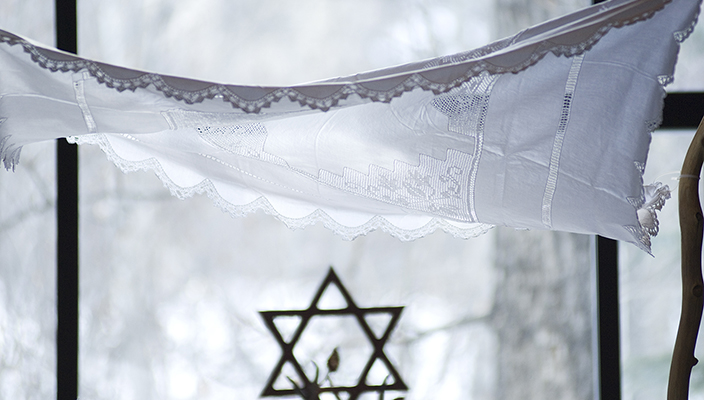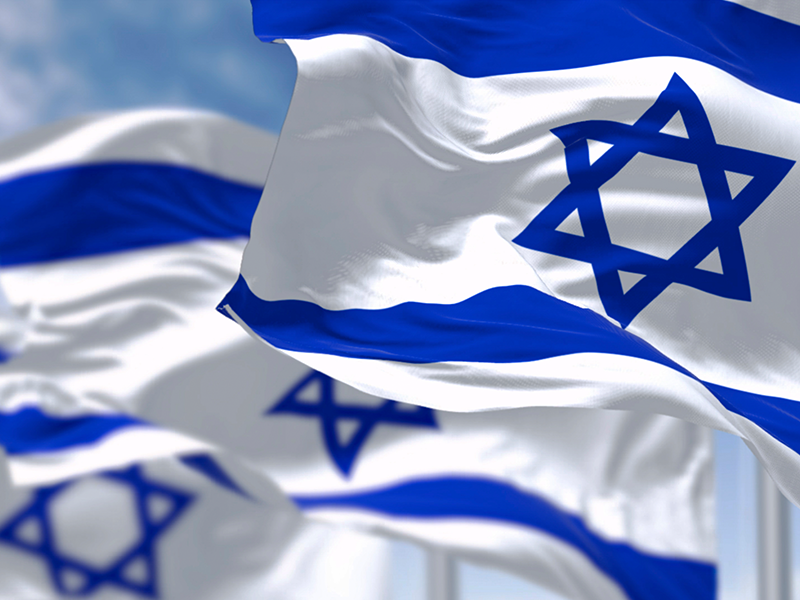How to Create an Inclusive Jewish Wedding Ceremony

Because every family has its own culture, every marriage is a merger of cultures and traditions. Here are 10 ways you can recognize and honor both partners’ identities, experiences, and backgrounds in your wedding ceremony and celebration. Although compiled with interfaith couples in mind, these ideas can enrich the wedding day of any couple.
1. Choose the right rabbi, cantor, or wedding officiant for you.
An officiant with an inclusive approach will open up possibilities and work with you to create a meaningful wedding ceremony that will resonate throughout your married lives. Your rabbi or cantor will be your best guide for creating the ceremony you desire that takes your whole selves into consideration.
2. Reach out to your parents, grandparents, chosen family and cherished elders.
Invite cherished loved ones to share what is most important to them in a wedding ceremony. Let them know that while it’s your wedding, you’re eager to hear their thoughts and ideas. Tell them that it’s your intention to be inclusive. With your officiant’s guidance, consider inviting parents, grandparents, chosen family and other cherished elders from each family to offer a marriage blessing when you and your families are gathered to witness and sign the (religious document), immediately before beginning the formal ceremony.
3. Create an opportunity for parents and/or chosen family to connect with the officiant.
This connection is especially important when the officiant represents only one partner’s faith or cultural background. For example, I often meet with couples and their parents a few days before the wedding to introduce myself, answer questions, allay concerns, and to invite parents to reflect on the values they hope they have passed on to their children. I have found parents are most appreciative of this opportunity.
4. If you share different spiritual backgrounds, ask your officiant to acknowledge them during the ceremony.
For example, the officiant might note that your wedding unites two families and express through prayer and/or sentiments the wish that the traditions of both families will continue to be a source of strength and support throughout your marriage. Or, they might acknowledge that the two backgrounds share many values, naming some of those specific values.
5. Check that your officiant will share an English translation of the Hebrew blessings.
This practice is important not only for Jewish guests with limited knowledge of Hebrew, but also for guests who are not Jewish. It ensures they can be fully involved in this sacred event and emphasizes that you value their presence and experience at your wedding.
6. Create a personalized wedding program that explains some of the key rituals and symbols of the ceremony.
A written program is an appropriate place to express thanks to both families in which you were raised and the values that you plan to bring into the new family created by your marriage. It is also a place to mention any ceremonial items that were provided by loved ones.
7. Invite beloved family and friends to share blessings and poetic readings during the ceremony.
With your officiant’s guidance, choose readings that are from no particular faith tradition or readings that are shared between faiths. For Jews and Christians, selections from Song of Songs are popular.
8. Incorporate meaningful ritual items from each partner’s family.
At Jewish weddings, couples typically drink from two – sometimes three – wine goblets. Perhaps there is a special glass or goblet that each family can lend for the ceremony. If there is a special family heirloom that has been used at other family milestones, it can be placed on the table underneath the wedding canopy.
9. Incorporate secular wedding tasks for loved ones.
There are many non-religious, yet significant, opportunities for loved ones to participate in your wedding. Among them are serving in the wedding party, offering toasts at the celebration, serving as witnesses for the civil wedding license (in states that require them), and hosting wedding-related events before the big day.
10. Personalize your chuppah (wedding canopy).
Jewish wedding ceremonies take place under a (wedding canopy), which represents the home you and your spouse will create together. For the roof of the chuppah, you might incorporate significant textiles from each partner’s family. For example, you could include an embroidered handkerchief or tablecloth, a swatch of fabric from a family member’s wedding gown, or a (prayer shawl). Alternatively, invite guests or family members to create a “quilt” from squares of fabric you provide them to decorate and then stitch together.

